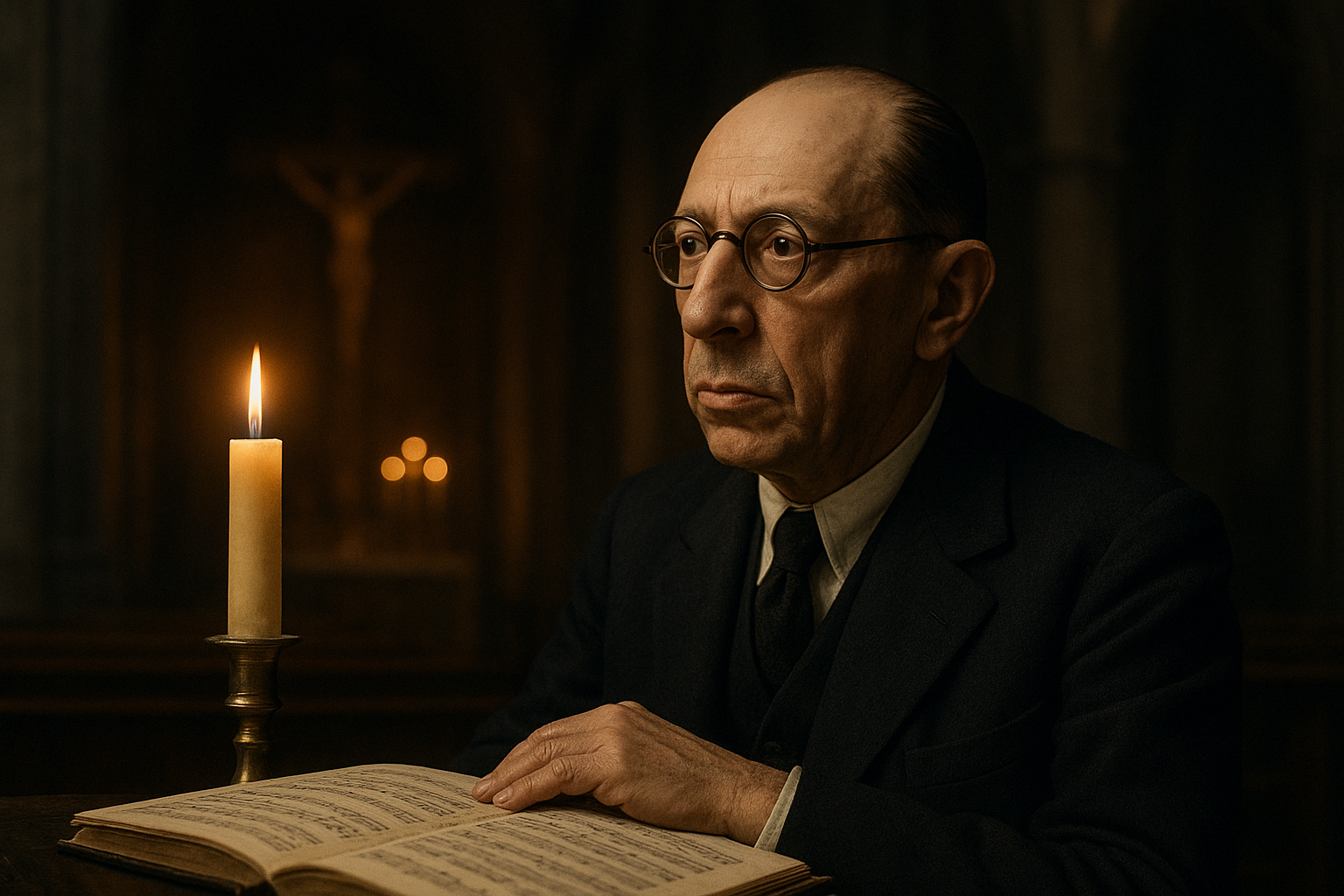Igor Stravinsky, a towering figure in 20th-century music, is celebrated not only for his groundbreaking ballets but also for his profound sacred works. Stravinsky’s journey into the realm of sacred music emerged as a mystical journey, blending his distinctive modernist style with deep religious introspection.
The Spiritual Reawakening
Stravinsky’s religious compositions were rooted in personal transformations that took place around the time of his re-conversion to the Russian Orthodox Church in the 1920s. His spiritual reawakening bore fruit in compositions that contain intricate interplays of ritualistic elements and innovative musical language. In the words of Stravinsky himself,
“The Church knew what the Psalmist knew: music praises God. Music is well or better able to praise him than the building of the Church and all its decoration; it is the Church’s greatest ornament.”
This statement encapsulates his reverence for the sacred potential of music.
The Symphony of Psalms
One of the most distinctive examples of Stravinsky’s sacred works is the “Symphony of Psalms” (1930), a piece commissioned by Serge Koussevitzky for the Boston Symphony Orchestra’s 50th anniversary. Stravinsky combined texts from the Vulgate Bible in Latin, crafting a work that was not only a personal spiritual statement but also a public declaration of faith.
The “Symphony of Psalms” is characterized by its austere beauty and a rich tapestry of choral and orchestral textures. Its opening, with the stark, powerful choral entrance, immediately sets a tone of solemnity and mysticism. As critic Alex Ross writes in The New Yorker, “The Symphony [of Psalms] communicates not only a religious devotion but a sense of the divine as a force both overwhelming and serene.”
A Labor of Faith and Innovation
Stravinsky’s sacred works reveal his ability to transcend conventional musical boundaries, blending faith with innovation. From the introspective “Mass” (1944-48), which employs an unorthodox instrumentation with its woodwind-heavy ensemble, to the grandeur of “Threni: Lamentations of Jeremiah” (1957-58), each piece reflects a different facet of his mysticism.
In embracing elements of the liturgical tradition while maintaining his distinct voice, Stravinsky managed to create a musical language that echoed both the ancient and the modern. As listeners and musicians continue to explore these sacred works, the mystical aura surrounding them remains as compelling today as it was in Stravinsky’s time.
For those who wish to delve deeper into the profound spirituality and innovation of Stravinsky’s sacred music, these compositions offer an enthralling journey through the maestro’s visionary mind.
